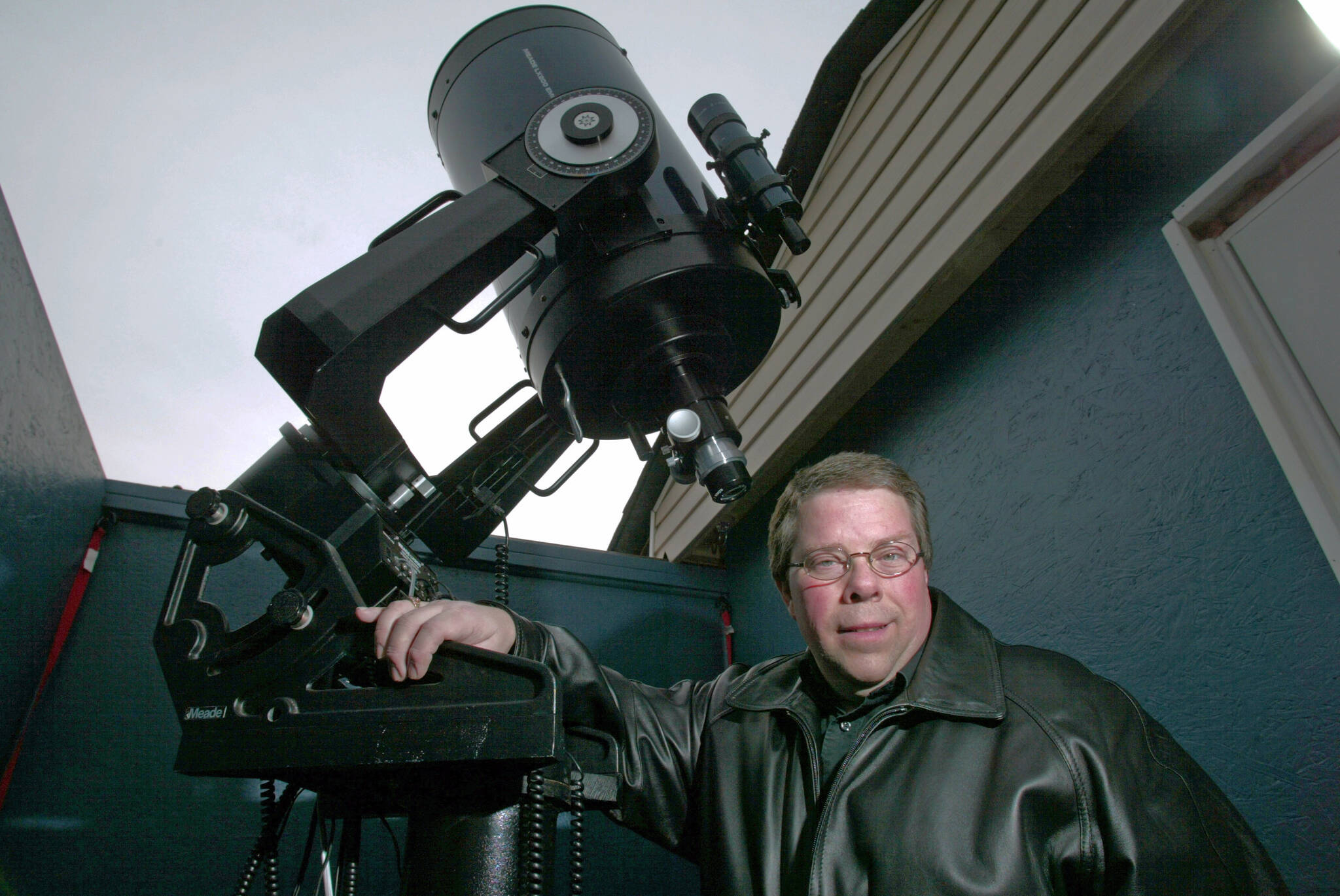By Gary Boyle – The Backyard Astronomer
The night sky is a fantastic collection of tiny dots. Most of these light sources are faint while a few are noticeably brighter. In addition to seeing hundreds or even thousands of distant suns residing at extreme distances, we can see the planets of our solar system.
Referred by the Greeks as the “wanderers”, five planets can be seen with the unaided eye against the starry background unless they are too close to the sun such as Mercury and Saturn. For the next few weeks, you can still see three in the western half of the sky.
We start overhead with orangy-coloured Mars to the top right of Orion the Hunter. This planet was closest to earth a couple of months ago and now appears a bit fainter as our distance increases. The red planet sets around 3:30 a.m. local time. Moving farther west we see the giant planet Jupiter. Any telescope will reveal its cloud bands and four Galilean moons and sets around 9:30 p.m. locally.
Our third world is the brightest of the trio. Venus sets about two hours after sunset and is now moving higher in the sky each night as it escapes the solar glare. This planet is completely shrouded in clouds making it so bright that it casts a faint shadow as seen from dark country locations, away from any light. Step outside on a moonless night and let your eyes “dark adapt”. After about fifteen minutes, hold up a sheet of white paper facing the planet. Place your hand about six inches away from the paper while moving it slowly left and right. You should see a faint shadow on the paper. If you are still uncertain where the planets are, check any astronomy app on your smartphone or tablet.
Here is where the magic comes into play. With Jupiter moving closer to the horizon each night and Venus marching up the sky, both will appear closest together on March 1st. With the two brightest planets of the solar system meeting in a small area of sky the width of the full moon, they will appear as “spooky eyes”. This is also called a conjunction as two celestial bodies appear close together. The pair’s close approach is by line of sight only, they will not physically get close to each other. Venus will be 204 million km from us while Jupiter will be 864 million km away.
It is believed the Star of the Magi was the great conjunction in which Venus and Jupiter appeared so close, they looked like one object. This occurred on the night of June 17, 2 BC.
Clear skies,
Known as “The Backyard Astronomer”, Gary Boyle is an astronomy educator, guest speaker, monthly columnist for the Royal Astronomical Society of Canada as well as a STEM educator. He has been interviewed on more than 55 Canadian radio stations as well as television across Canada and the U.S. In recognition of his public outreach in astronomy, the International Astronomical Union has honoured him with the naming of Asteroid (22406) Garyboyle. Follow him on Twitter: @astroeducator, Facebook and his website: www.wondersofastronomy.com

